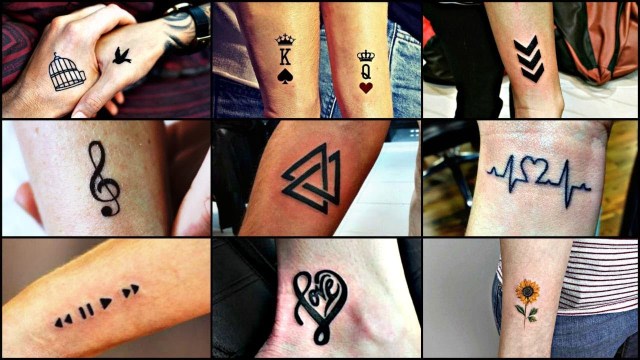A tattoo is a form of body modification where a design is made by inserting ink, dyes and pigments, either indelible or temporary, into the dermis layer of the skin to change the pigment. The art of making tattoos is tattooing.
Tattoos fall into three broad categories: purely decorative (with no specific meaning); symbolic (with a specific meaning pertinent to the wearer); and pictorial (a depiction of a specific person or item). In addition, tattoos can be used for identification such as ear tattoos on livestock as a form of branding.
A traumatic tattoo occurs when a substance such as asphalt or gunpowder is rubbed into a wound as the result of some kind of accident or trauma. Coal miners could develop characteristic tattoos owing to coal dust getting into wounds. These are particularly difficult to remove as they tend to be spread across several layers of skin, and scarring or permanent discoloration is almost unavoidable depending on the location. An amalgam tattoo is when amalgam particles are implanted in to the soft tissues of the mouth, usually the gums, during dental filling placement or removal. Another example of such accidental tattoos is the result of a deliberate or accidental stabbing with a pencil or pen, leaving graphite or ink beneath the skin.
Many tattoos serve as rites of passage, marks of status and rank, symbols of religious and spiritual devotion, decorations for bravery, sexual lures and marks of fertility, pledges of love, amulets and talismans, protection, and as punishment, like the marks of outcasts, slaves and convicts. The symbolism and impact of tattoos varies in different places and cultures. Tattoos may show how a person feels about a relative (commonly mother/father or daughter/son) or about an unrelated person. Today, people choose to be tattooed for artistic, cosmetic, sentimental/memorial, religious, and magical reasons, and to symbolize their belonging to or identification with particular groups, including criminal gangs or a particular ethnic group or law-abiding subculture.
Extensive decorative tattooing is common among members of traditional freak shows and by performance artists who follow in their tradition.
Tattoos have also been used for identification in other ways. As early as the Zhou, Chinese authorities would employ facial tattoos as a punishment for certain crimes or to mark prisoners or slaves. During the Roman Empire, gladiators and slaves were tattooed.

